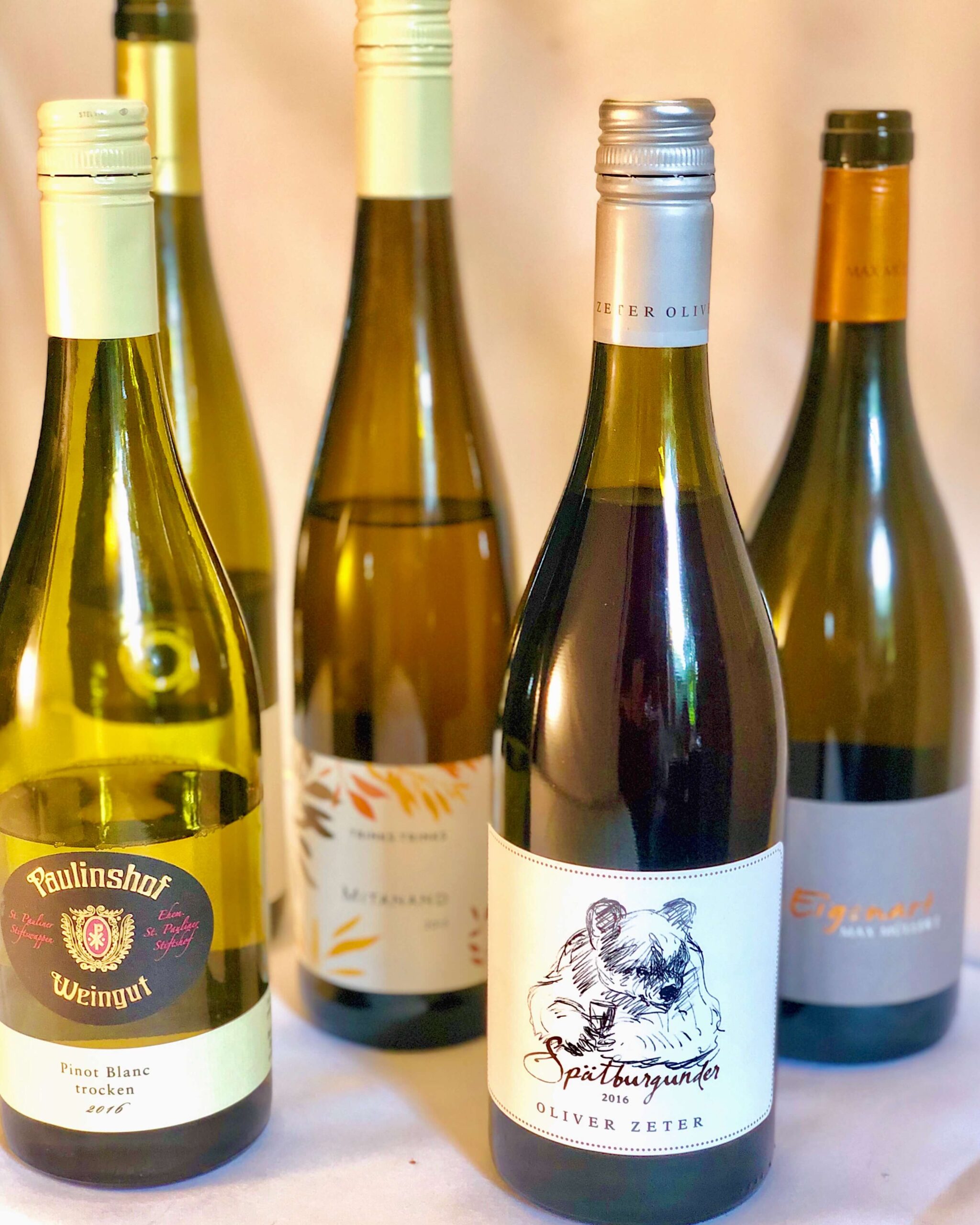Germany has a history of winemaking that dates back to 100 B.C. It is one of the most northern wine producing countries in the world and produces wines that are dry as well as sweet, red as well as white.
Germany wine regions
Germany is split into 13 wine regions:
1)Mosel
2)Nahe
3)Rheingau
4)Rheinhessen
5)Pfalz
6)Baden
7)Franken
8)Württemberg
9)Ahr
10)Hessische Bergstraße
11)Mittelrhein
12)Saale-Unstrut
13)Sachsen
Climate of Germany
Most of the regions have a cool climate, however vineyards in the further south in Baden are noticeably warmer. Summers can be wet, it rains less in autumn during the final ripening time.
Cool climate results in a long growing season allowing the grapes to ripen slowly while maintaining fruity acidity, develop natural sugars and absorb minerals from soil.
Grape growing practices in Germany
In nearly all regions the best sites are found on steep, often stony slopes facing the south, which maximizes the heat and sunlight.
On these slopes the vines are head pruned, individually staked and the canes are tied in at the top of the stakes to maximize grape exposure to light and air circulation. Germany has a great variety of soils. The precise soil type varies significantly over small areas which leads to subtle changes in style and quality of wine.
Premium White Grape Varieties
RIESLING:
Riesling is the flagship variety in Germany and accounts for 20% of the vineyard area. Germany produces 2/3rd of the world’s Riesling. The variety expresses itself differently from region to region and vineyard to vineyard due to variations in climate and soil.
Mosel Rieslings are light in body with mouth-watering acidity, refreshing with hints of lime and flowers on the nose sometimes with honey and mineral flavors. By contrast, Riesling produced in the warmer areas like Pflaz and Rheinhessen is often drier in style, full bodied with stone fruit aromas (peach and apricot) and gives a rounder mouthfeel.
MÜLLER-THURGAU:
Müller-Thurgau is the second most planted white grape variety in Germany. It is a crossing made in the 1880’s between Riesling and Madeliene Royale. Ripens earlier than Riesling but it does not have the same level of acidity or flavor intensity. The wines are aromatic with peach and floral tones often with a touch of sweet.
SILVANER:
Silvaner is the third most planted white grape variety in Germany and is mainly found in Rheinhessen and Franken. Produces wines that are dry, light in body with high acidity and flavors of citrus zest and green apple.
RÜLANDER/GRAUBURGUNDER:
There are significant plantings of Pinot Gris as well known as Rülander / Grauburgunder in Germany. Grauburgunder offers bold aromas of white peach and lemon zest with subtle spicy notes on the palate.
Weißburgunder:
There are smaller plantings of Pinot Blanc as well, known as Weißburgunder in Germany. Produces wines with flavors of pear, nectarine and sometimes with a hint of honey.

Premium Black grapes
Germany is the third largest producer of Pinot Noir in the world, after France and America, known as Spätburgunder in Germany.
These grapes thrive in warmer vineyard areas such ad Franken, Baden, Württemberg and Pfalz. The wines are velvety smooth with fruity aromas and delicate cherry notes which makes it an ideal partner for game dishes.
Dornfelder:
Dornfelder is also widely planted. It particularly produces deeply coloured wines with medium tannin, red fruit flavours and some herbaceous notes.
Other important black grape varieties are :
• Portuguiser
• Trollinger
• Schwarzriesling
These grapes produce light-bodied and fruity wines. Although examples with more intense colors and flavors do exist.

